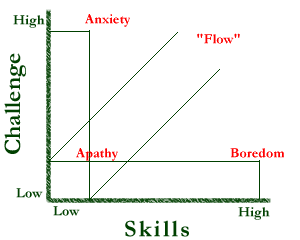With new discoveries in epigenetics now making headlines, many of us are asking an important question: What are my children really inheriting? Can my baggage, the unfinished business I don’t deal with, pass on to my kids? Without knowing it, could I be hurting them?
To answer this comprehensively, we need to look at the science. The newest research in epigenetics tells us that you and I can inherit gene changes from traumas that our parents and grandparents experienced. It goes like this. When a trauma occurs, our bodies make a physiologic change to better manage the stress. This adaptive change can then be passed down to our children and grandchildren biologically preparing them to deal with similar trauma. This can be a good thing, unless of course, the inherited changes create even more stress.
If our grandparents, for example, were traumatized from living in a war-torn country—explosions going off, people getting killed, the rattle of gunfire close by—they could pass on a survivor skillset to us—a body on hyperalert, reflexes to react quickly to loud noises, and other such protective responses. This skillset would be helpful were we to also live in a country at war. However, living in a safe environment where this inheritance isn’t useful, the constant hypervigilance can create havoc in our bodies.
Our parents’ and grandparents’ pain—their fears, their angers, their grief, their shutdowns—can all unwittingly become ours.
So here’s the bad news: Yes, it’s true. Our parents’ and grandparents’ pain—their fears, their angers, their grief, their shutdowns—can all unwittingly become ours, a legacy we can perpetuate in our family. And here’s the sad part: few of us ever make the link between our issues—our unexplained fear, anxiety and depression—and what happened to our family members in a previous generation. Instead, we believe that we’re the source of our problem, that something must be wrong with us, or broken inside us, that makes us feel the way we do.
These unconscious patterns, along with whatever business we leave unfinished, can then pass on to our children
And it doesn’t end there. These unconscious patterns, along with whatever business we leave unfinished, can then pass on to our children, and even to their children. What could be more painful than to see our children suffering, knowing that he or she continues the pain we’ve left unattended?
Is there any good news? Absolutely. There are actions we can take that can help break the cycle.
Here’s the short list of things you can do.
Heal your own stuff. Reconcile your broken relationships with your parents, as well as with your child’s other parent. When we find someone’s behavior challenging, it’s helpful to consider the traumatic events in his or her family history. Remember, the residue of pain can pass forward. And children, because of their great innocence and loyalty, are easy targets. Children can unconsciously carry what’s unresolved between their parents, and mirror it in their own relationships. Or (as we’re learning from epigenetics), they can relive what’s unresolved behind the parents.
Shake the family tree and see what falls out. What family secrets have been hidden? What stories didn’t get told? What traumas have never fully healed? It can be important to know these things, especially if we’re unconsciously reliving elements of traumas that don’t belong to us. Some family history questions to consider can be found at: Family History Questions.
Tell your kids what you know about the traumas in your family. Tell them the terrible things happened to you, and whatever you know about what happened to your parents and your grandparents. They could be the unwitting recipients of painful feelings from the past. When you tell them what tragedies smolder in the family history, it can come as a great relief to them—especially if they make the connection that they’ve been carrying what belongs to you, or to your parents or grandparents.
I once worked with a guy who unconsciously attempted to atone for the crimes his grandfather had committed. My client had attempted suicide three times. Finding himself still alive after the third attempt, he sought help. When I pointed out that he had been attempting to pay the ultimate price for crimes he never committed, he turned to me and said: “I don’t have to die? You mean it’s not me who needs to die?”
I’ve found that if we ignore the past, it can come back to haunt us. Yet when we explore it, we don’t always have to repeat it. We can break the cycle of suffering, so that our children can be free from having to live our pain in their lives.
by Mark Wolynn This article was first published on June 13, 2016 in Mark Wolynn’s Blog
Ken’s Comments
After working with people for a while, I find that they often comment about having cleared much of the “baggage” they feel they carry from childhood. Once this is acknowledged, it is common for them to realise that there is additional unresolved “baggage” and “emotional triggers” that seem to arise from somewhere deeper. My experience suggests that these could be inherited epigenetic triggers from past generations of their family.
What I find amazing (and supported by cutting edge research) is that these inherited triggers can be healed in the present. Addressing our inherited emotional baggage, therefore provides the opportunity to avoid passing emotional pain on to our children and our children’s children. It can be challenging, but people express relief and satisfaction in clearing what they describe as stubborn patterns of behaviour. I regard these courageous people to be Transition People , because they are taking action on behalf of the future. I have written about Transition People in an article which can be found at: Are You a Transition Person?



